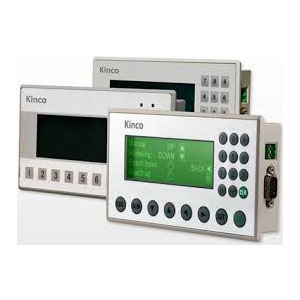A user interface or dashboard that links a human to a machine, system, or device gets referred to as a Fuji HMI Operators or Human-Machine Interface. While the phrase technically refers to any screen that lets a user engage with a device, it usually gets in an industrial process.
HMIs have a relation with Graphical User Interfaces (GUIs) in certain aspects, but they are not the same; GUIs get used within HMIs for visualization capabilities.
Basic HMI instances include machine-integrated displays, desktop computers, and tablets, but irrespective of their structure or terminology, they aim to offer insight into mechanic performance and development.
Uses of Human-Machine Interface or Fuji HMI Operators:
 HMIs exchange data with Programmable Logic Controllers, and input and output sensors to get and display users’ information. Depending on how they get implemented, HMI screens get used for a simple purpose, such as monitoring and tracking, or for more complicated activities, such as shutting machines off or raising production speed.
HMIs exchange data with Programmable Logic Controllers, and input and output sensors to get and display users’ information. Depending on how they get implemented, HMI screens get used for a simple purpose, such as monitoring and tracking, or for more complicated activities, such as shutting machines off or raising production speed.
HMIs gets used to optimize manufacturing processes by digitizing and centralizing data for a viewer. Using Fuji HMI operators may see key information presented in charts, graphs, or electronic dashboards, examine and handle alerts, and link to SCADA, ERP, and MES systems from a single interface. Tellus & V-Server from Fuji Electric and Technoshot from Fuji Electric also use HMI for processing.
Previously, operators would have to traverse the floor frequently to monitor mechanical progress and write it on paper or a whiteboard. The HMI technique reduces the need for this obsolete approach by allowing PLC to convey real-time information directly to an HMI display, reducing numerous expensive problems caused by a lack of knowledge or human mistake.
HMI Technology Trends in Development:
Changing business and operational requirements have prompted intriguing improvements in HMI technology during the last decade. It is now increasingly frequent to observe developed types of HMI. Along with more classic models, sophisticated HMI examples include high-performance HMIs, touch displays, and mobile devices.
Rising HMIs:
 Operators and consumers are increasingly gravitating towards high-performance HMI, a type of HMI design that promotes quick, effective interaction. This design strategy helps the viewer perceive and respond to situations more effectively, in addition, to making better-informed judgments, by directing attention only to the most required or crucial indications on the interface.
Operators and consumers are increasingly gravitating towards high-performance HMI, a type of HMI design that promotes quick, effective interaction. This design strategy helps the viewer perceive and respond to situations more effectively, in addition, to making better-informed judgments, by directing attention only to the most required or crucial indications on the interface.
Indications on high-performance fuji HMI operators are basic, clean, and devoid of any unnecessary images or controls. Other design aspects, such as color, size, and positioning, get utilized sparingly to improve the user experience.
Touch Screens and Portable Devices:
Two HMI examples of technological breakthroughs that have occurred with the introduction of smartphones are touch screens and mobile devices. Instead of switches and buttons contemporary HMIs enable the customers to access controls by tapping or touching the physical screen.
Touch displays are especially significant when it comes to mobile HMI, which gets implemented via web-based HMI/SCADA or an application. Operators benefit from mobile HMI in a variety of ways, including rapid access to HMI data and monitoring systems.
Remote Control:
Mobile-friendly remote monitoring gives operators and supervisors more freedom and accessibility. An offsite control system engineer, for example, can utilize this function to validate the thermostat of warehouses on a portable device, reducing the requirement for onsite monitoring after working hours. Checking up on a procedure on your manufacturing floor despite being miles away from the site will soon become routine.
HMIs at the network’s edge and in the cloud:
Edge-of-network Human-machine interface or Fuji HMI Operators are also in great demand because they enable operators to get data and visualization from field devices. Furthermore, it is becoming increasingly usual to transport information from localized HMIs to the cloud, allowing it to get viewed and analyzed remotely while maintaining control capabilities local.

